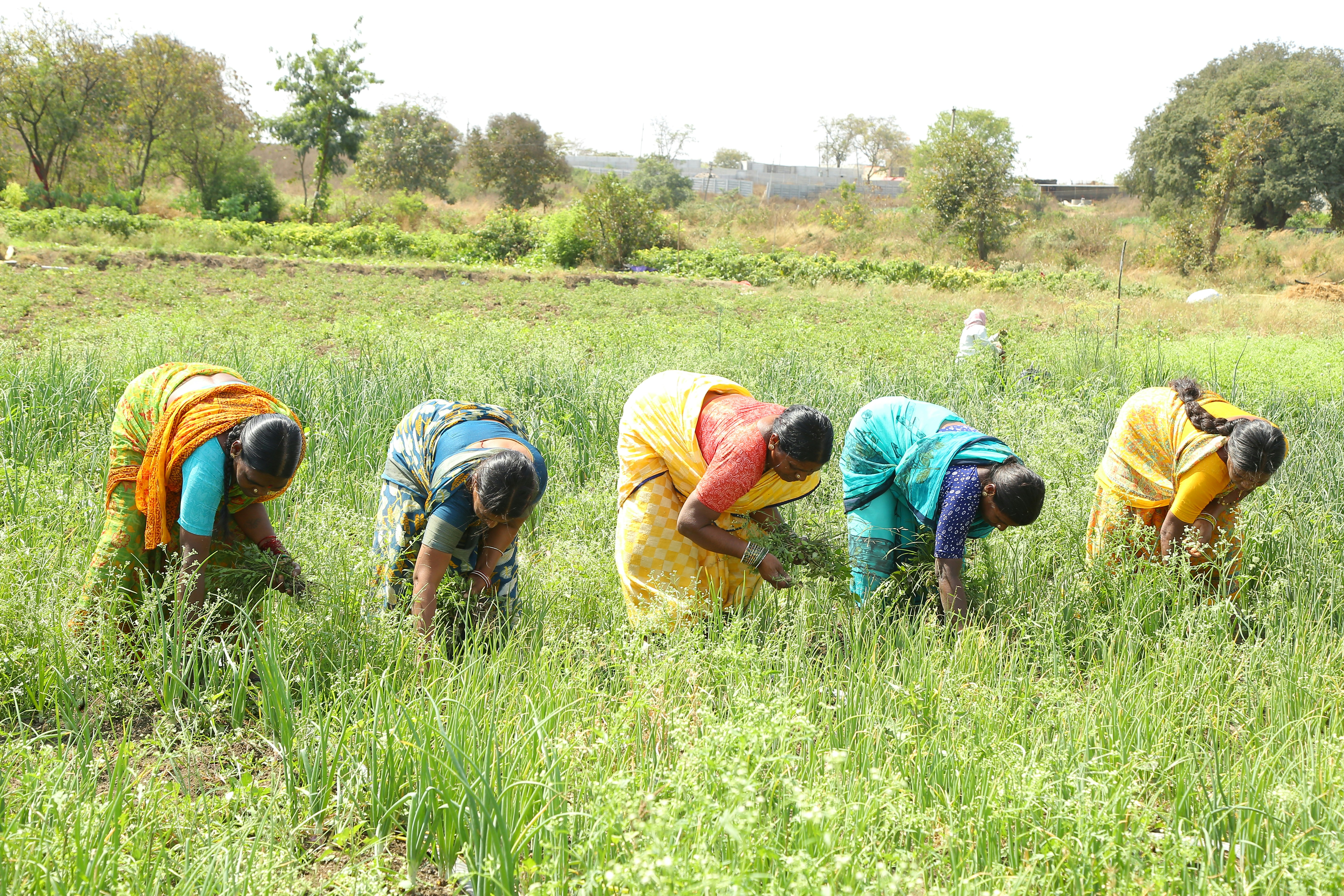Protecting people, protecting nature: The nexus between gender-based violence and the environment – International Union for Conservation of Nature

Report on the Intersection of Gender-Based Violence, Environmental Conservation, and the Sustainable Development Goals
Introduction: The Nexus of Gender Equality and Environmental Sustainability
The International Union for Conservation of Nature (IUCN) has identified an inextricable link between gender inequality, gender-based violence (GBV), and sustainable conservation. Addressing the nexus of GBV and the environment is fundamental to achieving the Sustainable Development Goals (SDGs), particularly SDG 5 (Gender Equality). This report outlines how environmental management and conservation efforts are deeply interconnected with gender dynamics, influencing the successful implementation of the 2030 Agenda for Sustainable Development.
GBV as a Barrier to Achieving Sustainable Development Goals
A 2020 IUCN report established that GBV is a tool used to assert control over natural resources, thereby reinforcing gender inequalities and hindering progress on multiple SDGs. This dynamic undermines efforts to achieve:
- SDG 5 (Gender Equality): GBV is used to enforce social norms that dictate who can access, use, and manage resources, directly impeding women’s empowerment.
- SDG 14 (Life Below Water) and SDG 15 (Life on Land): Control over resources through violence prevents equitable participation in conservation and sustainable use. Examples include sexual extortion in fisheries (“sex-for-fish”) and the use of domestic violence to prevent women’s land inheritance rights.
- SDG 10 (Reduced Inequalities): GBV perpetuates power imbalances and marginalizes women and girls, especially those from Indigenous communities.
Environmental Stressors and their Impact on Gender-Related SDGs
Environmental degradation, climate change, and resource-related conflicts exacerbate vulnerabilities to GBV, creating significant setbacks for several SDGs. Key linkages include:
- Resource Scarcity and SDG 6 (Clean Water and Sanitation): Gender-differentiated roles, such as the responsibility for water collection falling on women and girls in 7 out of 10 households, expose them to heightened risks of physical and sexual violence. This undermines both SDG 5 and the safe water access targets of SDG 6.
- Climate Change and Livelihood Loss (SDG 13, SDG 14): Environmental stressors like overfishing and ocean warming threaten livelihoods, leading to harmful coping strategies. In Indonesia, economic insecurity in coastal communities has led to an increase in child marriage, a direct violation of SDG 5 targets.
- Extractive Industries and Environmental Crime (SDG 16): The presence of extractive industries and illegal activities can intensify violence. In the Democratic Republic of the Congo, women near mines controlled by armed groups are almost three times more likely to experience sexual violence, demonstrating a critical failure in achieving SDG 16 (Peace, Justice and Strong Institutions).
Violence Against Environmental Human Rights Defenders and SDG 16
GBV is systematically used to silence women and girls advocating for environmental and territorial rights, which directly obstructs the goals of SDG 16 to ensure public access to information and protect fundamental freedoms. Indigenous women are disproportionately targeted due to intersecting forms of discrimination.
- In Guatemala, 2,520 attacks against women human rights defenders were recorded in 2023.
- Nine out of ten survivors of these attacks were Indigenous Mayan women, highlighting a severe challenge to SDG 10 (Reduced Inequalities) and SDG 16.
Policy Frameworks and a Path Forward for Integrated SDG Action
International policy frameworks are increasingly recognizing the need to integrate gender safety into environmental action. Commitments under the Convention on Biodiversity (CBD) and the United Nations Framework Convention on Climate Change (UNFCCC) represent progress toward aligning environmental policy with SDG 5. Addressing GBV is not a peripheral issue but a critical component for ensuring that conservation efforts are equitable and sustainable, contributing to the achievement of the SDGs for both people and the planet.
Analysis of SDGs, Targets, and Indicators
1. Which SDGs are addressed or connected to the issues highlighted in the article?
-
SDG 5: Gender Equality
- The article’s central theme is the link between gender inequality, gender-based violence (GBV), and environmental issues. It explicitly discusses how GBV is used to reinforce gender inequalities and power imbalances, preventing women from exercising their rights and participating in conservation efforts.
-
SDG 16: Peace, Justice and Strong Institutions
- The article highlights violence against women, including intimate partner violence, sexual exploitation, and attacks on women human rights defenders. It also mentions child marriage as a harmful practice. These issues directly relate to the goal of reducing violence and protecting fundamental freedoms.
-
SDG 6: Clean Water and Sanitation
- The article connects the lack of accessible water to increased risks of violence for women and girls. It states that women and girls are primarily responsible for water collection in most households, forcing them to travel long distances and exposing them to harassment and assault.
-
SDG 13: Climate Action
- Climate change is identified as an environmental stressor that exacerbates GBV. The article explains how climate-related impacts, such as the threat to fish stocks from ocean warming, lead to economic insecurity and harmful coping mechanisms like child marriage.
-
SDG 14: Life Below Water
- The article discusses issues within the fisheries sector, including sexual extortion (“sex-for-fish”) in value chains and the impact of overfishing on the livelihoods of coastal communities, which in turn contributes to social pressures that increase GBV.
-
SDG 15: Life on Land
- The article addresses the control over natural resources, land rights, and inheritance. It explains that GBV is used to prevent women from accessing, using, and managing these resources, and also to silence women environmental defenders, particularly Indigenous women.
2. What specific targets under those SDGs can be identified based on the article’s content?
-
Under SDG 5 (Gender Equality):
- Target 5.1: End all forms of discrimination against all women and girls everywhere. This is relevant as the article discusses how Indigenous women face “intersecting forms of discrimination,” making them more vulnerable to violence.
- Target 5.2: Eliminate all forms of violence against all women and girls in the public and private spheres. This is the core focus of the article, which details various forms of GBV, including domestic violence, sexual extortion (“sex-for-fish”), child marriage, and violence against activists.
- Target 5.a: Undertake reforms to give women equal rights to economic resources, as well as access to ownership and control over land and other forms of property… and natural resources. The article directly mentions that GBV is used to “prevent women’s inheritance and land rights” and to control who can “access, use and manage” natural resources.
-
Under SDG 16 (Peace, Justice and Strong Institutions):
- Target 16.1: Significantly reduce all forms of violence and related death rates everywhere. The article’s entire premise is about understanding and mitigating GBV in the context of environmental conservation.
- Target 16.2: End abuse, exploitation, trafficking and all forms of violence against and torture of children. The article explicitly cites child marriage in Indonesia as a “harmful coping strategy” resulting from environmental and economic pressures.
- Target 16.10: Ensure public access to information and protect fundamental freedoms. This is addressed by the mention of attacks on “women human rights and territorial defenders,” highlighting the risks faced by those exercising their freedom to advocate for their rights.
-
Under SDG 6 (Clean Water and Sanitation):
- Target 6.1: By 2030, achieve universal and equitable access to safe and affordable drinking water for all. The article highlights the gendered burden of water collection, where women and girls are primarily responsible, which is a key barrier to equitable access and exposes them to violence.
-
Under SDG 13 (Climate Action):
- Target 13.b: Promote mechanisms for raising capacity for effective climate change-related planning and management… including focusing on women. The article shows how climate change exacerbates vulnerabilities for women and girls, underlining the need for gender-responsive climate action, as referenced by the UNFCCC’s commitments.
3. Are there any indicators mentioned or implied in the article that can be used to measure progress towards the identified targets?
-
Proportion of households with women/girls as primary water collectors:
- The article states that “in 7 out of 10 households where water must be collected from a source outside of the home, women and teenage girls hold the primary responsibility for water collection.” This statistic serves as a direct indicator of the gendered burden of water collection, relevant to Target 6.1.
-
Prevalence of sexual violence by non-partners:
- The article provides a specific data point: “women living close to mines controlled by armed groups are almost three times more likely than women living further away to experience sexual violence by a stranger.” This can be used as an indicator for Target 5.2, measuring the prevalence of violence in specific high-risk contexts.
-
Incidence of child marriage:
- The article mentions that in Indonesia, “families are increasingly turning to child marriage to alleviate their burden.” The rate of child marriage in communities affected by environmental degradation can serve as an indicator for Target 16.2.
-
Number of attacks against human rights defenders:
- A precise figure is given: “in Guatemala there were 2,520 attacks or assaults against women human rights and territorial defenders in 2023 alone.” This is a direct indicator for Target 16.10, measuring the safety and protection of those exercising fundamental freedoms. The further detail that “nine out of ten survivors were Indigenous Mayan women” provides a disaggregated indicator for Target 5.1.
4. Table of SDGs, Targets, and Indicators
| SDGs | Targets | Indicators |
|---|---|---|
| SDG 5: Gender Equality |
|
|
| SDG 6: Clean Water and Sanitation |
|
|
| SDG 13: Climate Action |
|
|
| SDG 16: Peace, Justice and Strong Institutions |
|
|
Source: iucn.org
What is Your Reaction?
 Like
0
Like
0
 Dislike
0
Dislike
0
 Love
0
Love
0
 Funny
0
Funny
0
 Angry
0
Angry
0
 Sad
0
Sad
0
 Wow
0
Wow
0



















































.jpg.webp?itok=0ZsAnae9#)

























